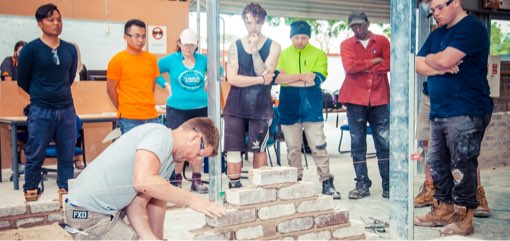What Is Bricklayer Apprenticeship and How It Is Done?
A bricklayer apprenticeship is a structured
training program that allows individuals to learn the skills and techniques of
bricklaying through a combination of on-the-job training and classroom
instruction. It provides aspiring bricklayers with the opportunity to gain
hands-on experience while working under the guidance of experienced
professionals in the field. Here's how a bricklayer apprenticeship is typically
done:
1.
Eligibility and Application:
To begin a bricklayer and Trade apprenticeships,
individuals typically need to meet certain eligibility requirements, such as
being of a certain age and having a high school diploma or equivalent. They can
then apply for an apprenticeship program through relevant organizations, trade
unions, or construction companies.
2.
Acceptance and Registration:
Once accepted into an apprenticeship program,
candidates are registered as apprentices. This involves completing paperwork
and agreements that outline the terms and conditions of the apprenticeship,
including the duration, wages, and responsibilities.
3.
On-the-Job Training:
Apprentices spend the majority of their time on
construction sites, where they work alongside experienced bricklayers. They
learn practical skills such as mixing mortar, laying bricks, blocks, and other
masonry units, building walls, and creating patterns and designs. As they
progress, apprentices take on more complex tasks under supervision.
4.
Classroom Instruction:
In addition to hands-on training, apprentices
also attend classroom instruction. These classes cover theoretical aspects of
bricklaying, safety protocols, reading blueprints, understanding building
codes, and using tools and equipment correctly.
5.
Mentorship and Supervision:
Throughout the apprenticeship, apprentices are
mentored and supervised by experienced bricklayers. Mentors provide guidance,
offer feedback, and ensure that apprentices follow proper techniques and safety
measures.
6.
Skill Progression:
The apprenticeship is divided into different
stages or levels, with each stage focusing on specific skills and competencies.
As apprentices demonstrate proficiency, they advance to higher levels of
responsibility and complexity.
7.
Assessments and Evaluations:
Bricklayer apprenticeship undergoes
periodic assessments to evaluate their progress and skill development. These
assessments may include written tests, practical exams, and evaluations of their
work on construction sites.
8.
Certification and Licensing:
Upon successfully completing the apprenticeship
program and meeting all requirements, apprentices receive a certification that
acknowledges their completion. In some regions, this certification may be a
necessary step toward becoming a licensed bricklayer.
9.
Career Advancement:
After completing their apprenticeships,
individuals can choose to continue working as bricklayers or explore
opportunities for career advancement. Some may choose to become supervisors,
project managers, or even start their own masonry businesses.
10.
Continuous Learning:
The field of bricklaying is always evolving with
new techniques, materials, and technologies. Even after completing the
apprenticeship, professionals in this field need to engage in continuous
learning to stay updated on industry trends and best practices.
A bricklayer apprenticeship by Brick and Block
Careers help you to learn a structured path for individuals to learn and master
the craft of bricklaying. It combines practical experience with theoretical
knowledge to ensure that apprentices develop a well-rounded skill set. By the
end of the apprenticeship, individuals are equipped with the expertise needed
to pursue a successful career in the construction industry as skilled
bricklayers.


Comments
Post a Comment